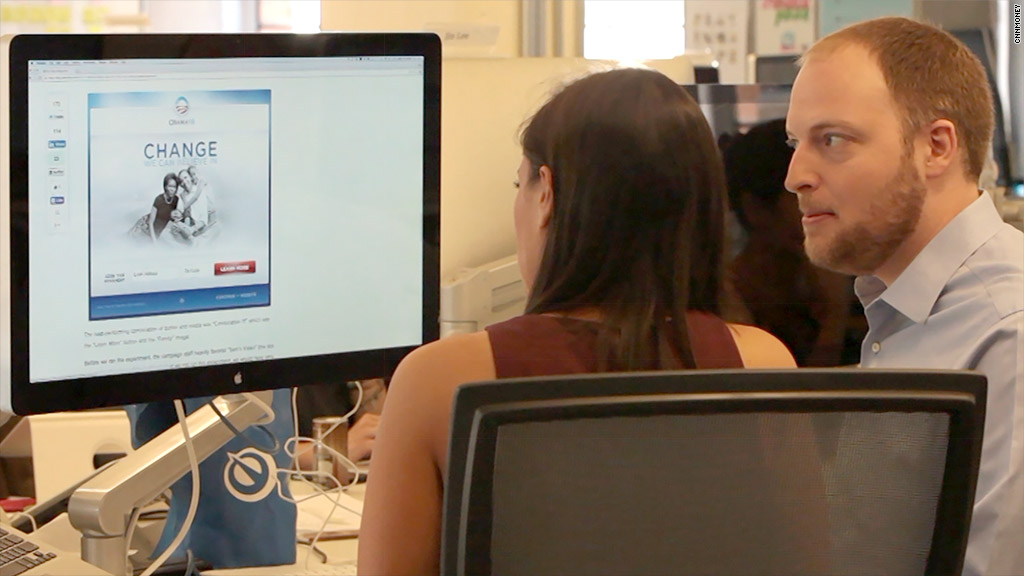
In politics, the message is everything.
But it's not all about the speeches -- even the smallest details on candidates' websites can give them an edge.
Are you more likely to hand over your email if you're prompted with "Sign me up?" or "Count me in?" More inclined to volunteer if you're greeted with a glossy picture of the candidate surrounded by family or a hero shot at a rally?
These questions are all answered by a technology called Optimizely.
A handful of presidential hopefuls -- Hillary Clinton, Rand Paul, Rick Perry, Scott Walker and Bobby Jindal -- are utilizing the service to personalize their campaign websites. The idea: craft a message expertly tailored to the site's visitors.
Candidates using Optimizely test out different messaging, images and page layouts to see which combination increases volunteer sign-ups and donations.
"A simple concept of an A/B test is what underlies our platform," founder Dan Siroker told CNNMoney. "If you go to a website and I go there, we might see different experiences, and then [the campaigns] measure which is the most effective."
Optimizely was created in 2010 to help everyone from big businesses to e-commerce companies personalize their websites. (CNNMoney has used Optimizely to test story placement.) The company now has 400 employees and $88 million in funding.
The technology itself was born during Obama's first presidential campaign. Siroker, a former Google (GOOG) engineer, left the company to run data analytics for Obama in 2007. His job was to use data to get more people to sign up for the mailing list or donate.
Siroker and his team found that a button reading "learn more," rather than "sign up" or "join us now," increased the likelihood that a visitor would enter his or her email. A black and white picture of Obama with his family also increased engagement. And when the image and "learn more" button were combined, Siroker says 40% more people entered their email.
After the campaign, Siroker launched Optimizely, which allowed anyone to use the technology.
This election cycle, Siroker said one of the biggest opportunities is for campaigns to craft different messages.
"There are certain issues that constituents across the country care about more about than others. ... Campaigns are really hamstrung about having to talk in broad generalizations about everything," he said.
Optimizely allows candidates to run multiple digital campaigns in various communities, a senior Democrat with close ties to Clinton's campaign told CNNMoney.
"In Iowa, we have field offices, so we want people to volunteer," he said. So if you live in Iowa and head to Clinton's site, you'll likely get a message encouraging you to volunteer. Meanwhile, if you're from California, where there are less staff on the ground, you might be encouraged to donate instead.
In 2012, both Obama and Mitt Romney were paying customers. Jason Weinstein, who worked on Romney's digital team, said the campaign focused heavily on "localizing" content in 2012.
"Just including the word "Florida" [for visitors from the state] increased our engagement by 19%," he told CNNMoney.
Weinstein said now that the secret's out and many campaigns are experimenting with personalization, it'll be about creativity.
"It's very easy to get stuck in the same loop of testing the word 'donate' versus the word 'contribute,'" he said.
This coming election, Siroker cites an unlikely example for inspiration: The Oakland A's -- a team that became known for their statistical approach to baseball.
"The Oakland A's used data to decide who to field instead of what the scouts would've suggested," Siroker explains. "They were able to do very, very well [and] do more with less. Let's look at data and use that to help guide us, as opposed to the way we've always been doing it, which is trusting our traditions and our instincts."

